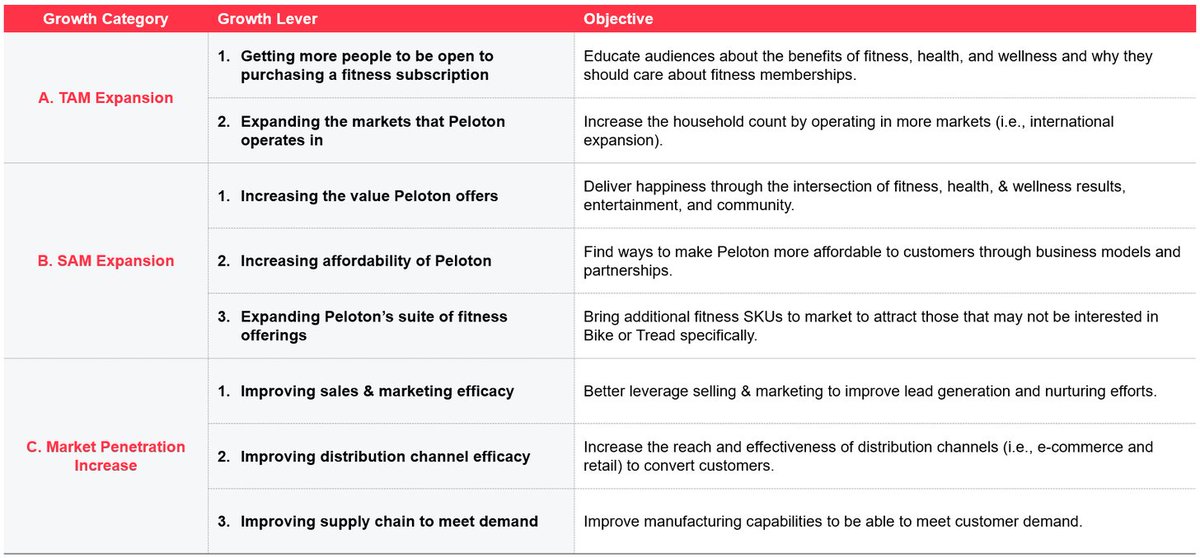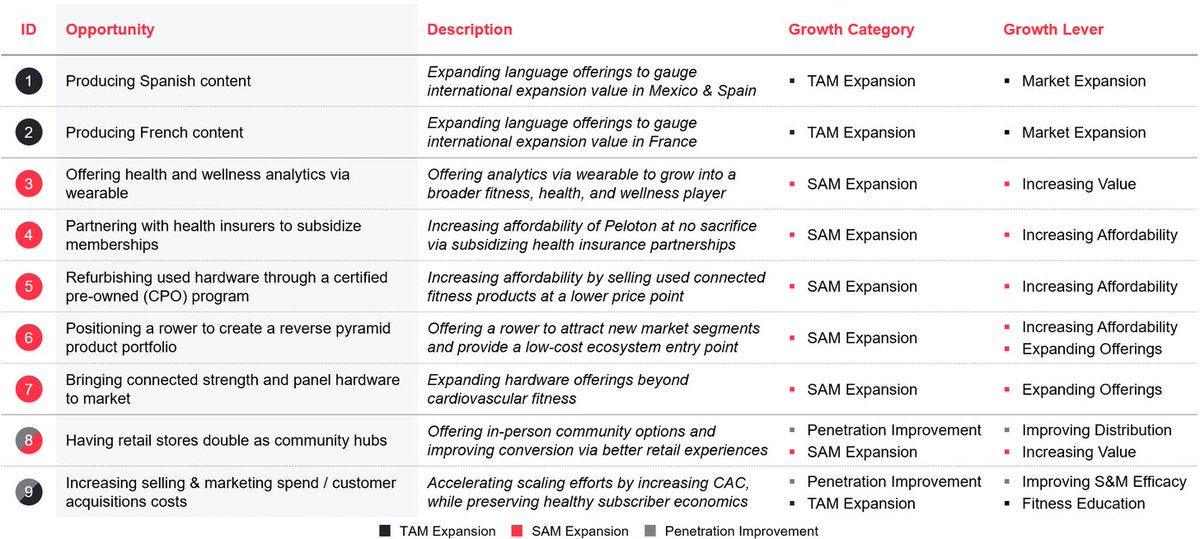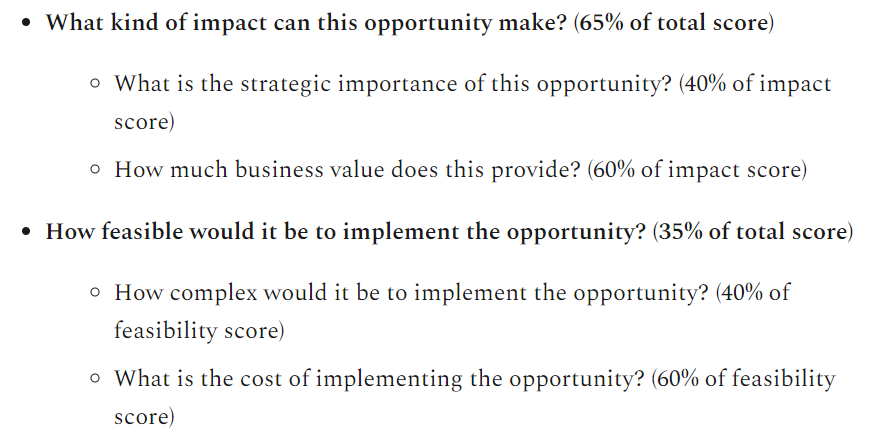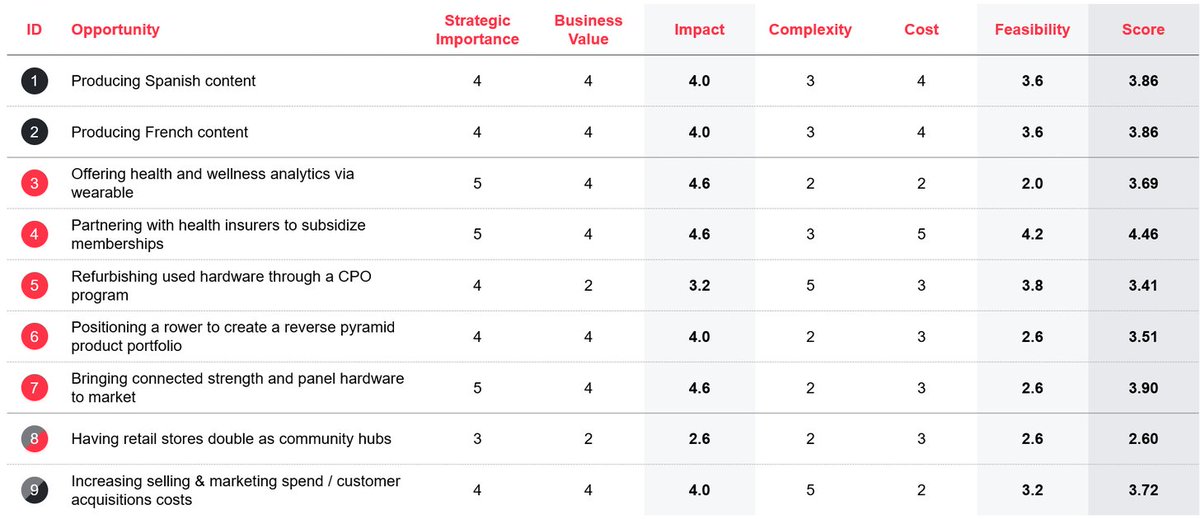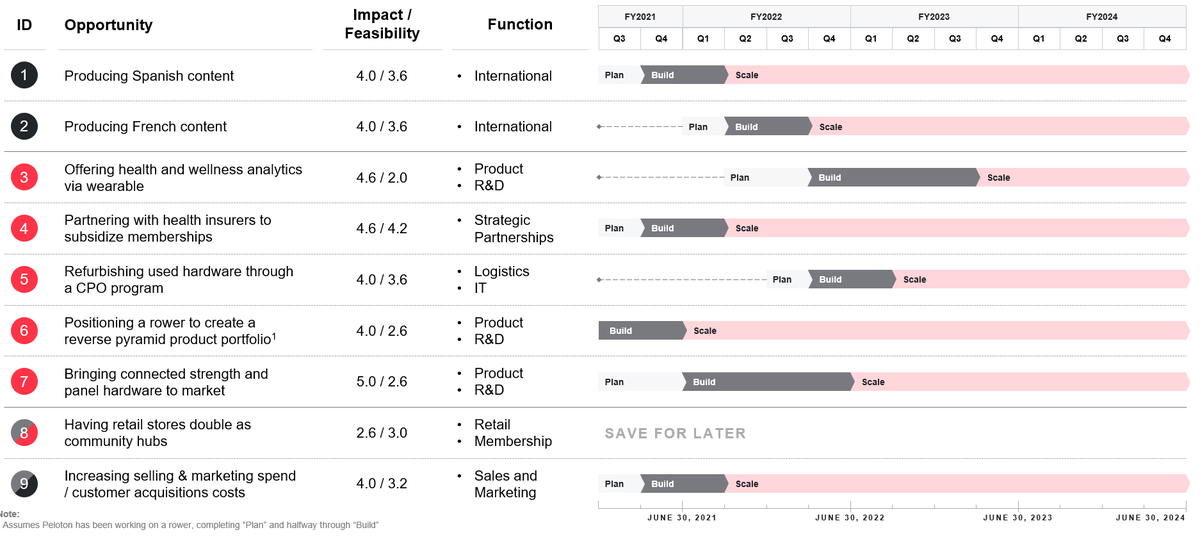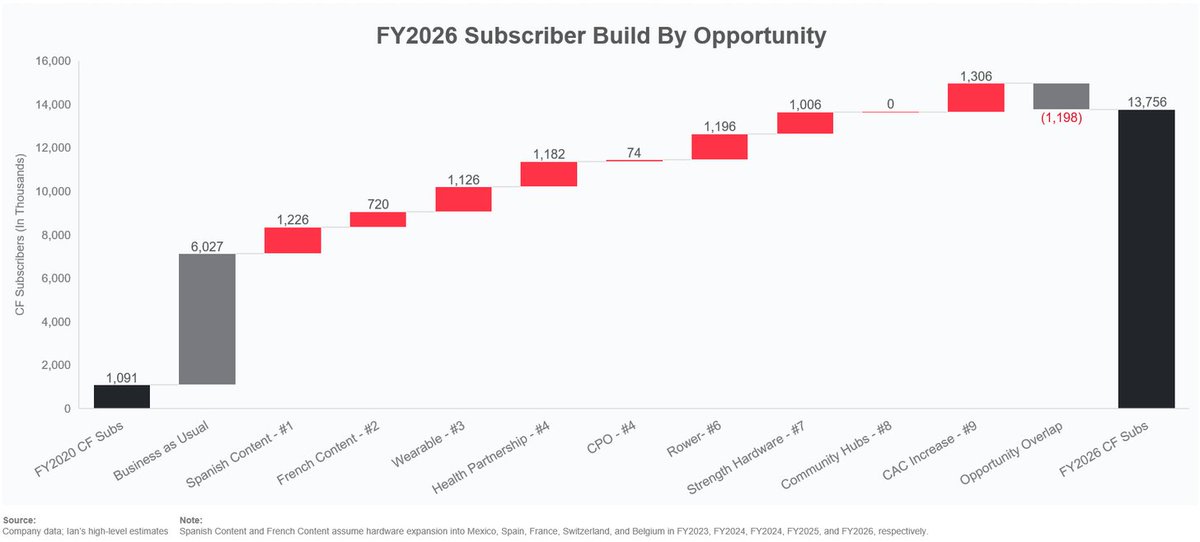Peloton Interactive Strategy - Part 2
I have taken some time to revise and add to the thinking in Part One to better approach where Peloton should be focusing its efforts.
Summarized in the thread below
$PTON https://sandboxthoughts.substack.com/p/peloton-interactive-strategy-part
I have taken some time to revise and add to the thinking in Part One to better approach where Peloton should be focusing its efforts.
Summarized in the thread below

$PTON https://sandboxthoughts.substack.com/p/peloton-interactive-strategy-part
1/ Why is there a part two?
While the ideas are interesting for Peloton in part one, the biggest piece of criticism has been:
"Why are these the strategies that will be most effective in catalyzing, or removing blockers for, growth?"
which is a fair criticism.
While the ideas are interesting for Peloton in part one, the biggest piece of criticism has been:
"Why are these the strategies that will be most effective in catalyzing, or removing blockers for, growth?"
which is a fair criticism.
2/ The reason I write is to learn and so I want to take the opportunity to improve my thinking and write about how to think about what Peloton should be focused on today.
3/ The first step to accomplish this is providing more structure to easily point to different strategy levers to pull on as different business contexts call for them.
This is the focus of this article.
This is the focus of this article.
4/ Owing to its big rise, Peloton has been able to establish a sizeable leadership position in the connected fitness space. However, growth must remain a priority for Peloton for three reasons.
5/
1. Scale Economies - Scale spreads content creation costs over the user base.
2. Network Effects - Scale increases data for content production/curation and social networks.
3. Remaining Opportunity - At 2% TAM and 9% SAM penetration, most of the market still up for grabs.
1. Scale Economies - Scale spreads content creation costs over the user base.
2. Network Effects - Scale increases data for content production/curation and social networks.
3. Remaining Opportunity - At 2% TAM and 9% SAM penetration, most of the market still up for grabs.
6/ The quicker Peloton captures the remaining market opportunity and increases its relative scale, competitors will be increasingly disincentivized to make investments that would erode value for Peloton.
7/ To begin thinking about growing the subscriber base, we can establish “growth categories” and specific levers to pull on for growth.
8/ With a foundational structure for understanding how Peloton can achieve connected fitness subscriber growth, you can start to ideate on how Peloton can tactically act on the specific levers.
Check out the full post for a deep dive on each of the opportunities.
Check out the full post for a deep dive on each of the opportunities.
9/ However, going after all of them right out of the gate, with certainty, is a recipe for disaster. Thus, we need to develop a framework to evaluate each opportunity against each other.
Framework and results below.
Framework and results below.
10/ Next, Peloton can roadmap the opportunities, considering:
Impact - High impact opportunities should come first
Feasibility - Overlap of resource-intense opptys should be minimized
Responsible Parties - Business functions shouldn't be overwhelmed with multiple projects
Impact - High impact opportunities should come first
Feasibility - Overlap of resource-intense opptys should be minimized
Responsible Parties - Business functions shouldn't be overwhelmed with multiple projects
11/ With these considerations in mind, here is a potential roadmap that Peloton can implement over the next 3-4 years.
12/ I believe this roadmap balances seizing the growth opportunities in front of them while prioritizing them to avoid spreading too thin.
I believe, this disciplined approach has the potential to bring in 6M CF subscribers above & beyond biz as usual by the end of FY2026.
I believe, this disciplined approach has the potential to bring in 6M CF subscribers above & beyond biz as usual by the end of FY2026.
13/ Ultimately, Peloton wins by sticking to its core values and being patient as it expands its reach.
Key takeaways:
Peloton’s priority should be growth to take advantage of and improve its leadership position and the scale economies and network effects that come with it.
Key takeaways:
Peloton’s priority should be growth to take advantage of and improve its leadership position and the scale economies and network effects that come with it.
14/ The most promising opportunities are ones that provide the market with more and better access to Peloton and double down on Peloton’s core principle that connected fitness hardware improves fitness, health, and wellness experiences.
15/ While there are many exciting opportunities, Peloton must be patient enough to roadmap the opportunities to avoid spreading too thin.
16/ Peloton should view this as a starting point and be nimble enough to alter the strategy and roadmap as business priorities and competitive landscapes evolve.
17/ Everything here merely sets the stage for potential value creation - without exceptional execution, these opportunities will not yield meaningful results.
18/ End!
A big thank you to @theundecidedg and @_JerryLi for their invaluable insights while putting this together.
A big thank you to @theundecidedg and @_JerryLi for their invaluable insights while putting this together.

 Read on Twitter
Read on Twitter